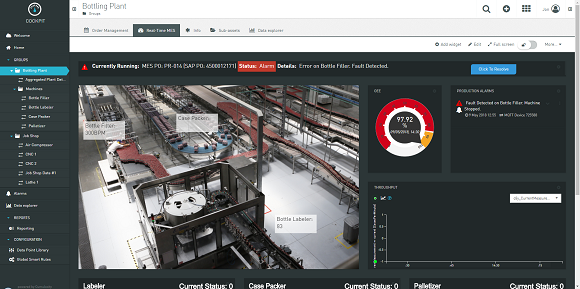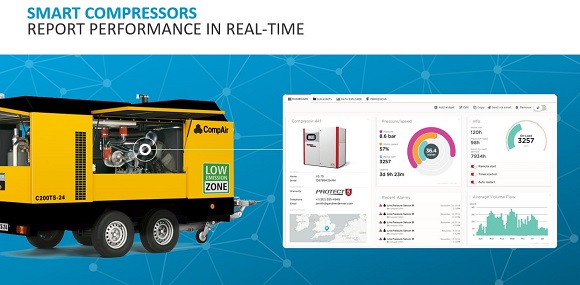Software AG Cumulocity: how an IoT ‘platform’ works
Every company wants to be a platform company, this is one of life’s great software industry truths.
Once you have a ‘platform play’, then other applications (or application components and other discrete compartmentalised services) can be ‘coded to it’ and the platform itself can be opened to integrations via Application Programming Interfaces (APIs) and more.
Facebook (rightly or wrongly) is a platform, Windows (and indeed Office 365) are platforms and of course there are the big cloud platform players. All of these higher-level software constructs allow developers to ‘code to’ them, or indeed ‘code from’ them i.e. to build software that extends the core functionality initially offered.
Software AG positions its recently acquired Cumulocity division – which is now a brand inside of the parent company – as a platform for Internet of Things (IoT) applications.
Offering a 100% open approach to APIs, Cumulocity is focused on handling the complex basic infrastructure elements associated with IoT applications such as scalability, security or multi-tenancy.
IT-OT-as-a-Service
The Cumulocity IoT platform includes a range of pre-packaged solutions such as condition monitoring, predictive maintenance and ‘track & trace’ functionality. It also includes device and sensor management. This is an OT-IT play, that is – a coming together of operational technology (OT) and information technology (IT).
According to Software AG, “Cumulocity IoT is unique in that it provides an IoT-as-a-Service solution that includes enhanced high availability and multi-cluster deployment options. Additionally, Cumulocity IoT incorporates several carrier-grade features, including code-free integration of devices supporting a variety of network technologies.”
Various types of IoT network technologies breaks down to: Low Power WAN (LPWAN) technologies used for long-term low bandwidth remote monitoring, Narrowband IoT (NB-IoT), Lightweight M2M (LWM2M) and Long Range (LoRa).
How does Cumulocity work?
So how does Cumulocity, as an IoT platform, actually work? The company has explained its technology as software that is capable of providing a ‘service wrapper’ for every IoT device project that a customer might want to deploy.
When we say ‘wrapped service’ in this sense, it is the platform’s ability to handle (as noted already) the core infrastructure side of IoT data operations — plus also, it’s ability to offer pre-packaged functions.
Over and above those core operational technologies, Cumulocity provides the ability to feed device data into dashboards that can track Key Performance Indicators (KPIs) and apply a layer of business logic to enable users to interpret what is happening.
The resultant service that Cumulocity produces is often white labelled – hence why the company refers to it as a wrapper. That service could be anything from vehicle emission reports to office equipment maintenance status – anything with an IoT sensor, basically.
But even with an IoT platform to back up your IoT project, Cumulocity says we need to approach deployments in this space in a specific strategic way.
“It’s like the expression – how do you eat an elephant? You cut it into pieces. It’s important to to start small and then scale up fast,” said Bernd Gross in his role as senior VP of IoT & cloud Software AG. “For a successful IoT deployment, it’s important to create an architectural set up that is not limited to one single use case because this can stifle your ability to scale in the longer term. Adopting an IoT platform approach allows you to change your business model and innovate over time.”
Software AG Cumulocity demonstrated its software working in motion at Internet of Things World in Santa Clara this month.
Imagine a bottling plant with sensors to track the following types of actions:
- bottles being filled
- tops being put on bottles
- labels being stuck onto bottles
- bottles being fitted into cases
- cases of bottles being set of pallets
Using Cumulocity’s visual control panels, a user can ‘declare a variable’ that describes the value recorded by a particular IoT sensor and be able track the value of that variable visually during live production. The system can also be set to flag thresholds for actions to be taken on the factory floor — and this is the part where business logic helps control the actions of the system within the data model that has been laid down for the use case in hand.

Software AG lists a selection key Cumulocity customer use cases as follows:
Trackerando markets a portfolio of GPS tracking solutions for a variety of applications, including fleet management, personal car locating, people tracking, elderly patient monitoring and pet recovery.
“It took us only six weeks from start to finish to build a fully customised IoT solution using Software AG’s Cumulocity IoT. This enables us to connect, monitor and track vehicles, people and assets in real-time and gain significant insights into the location of thousands of devices with diverse uses. Trackerando enables its customers to recover misplaced cars, monitor their children’s location, find lost pets and, on the industrial side, optimise fleet management routes and improve resource allocation,” said Bodo Erken, Trackerando, chief executive officer at Trackerando.
Software AG has also noted that STW (Sensor-Technik Wiedemann) is implementing a software system powered by Cumulocity for remote condition monitoring of exhaust gas treatment systems retrofitted to London buses as part of the Greater London Authority’s plans to create an Ultra Low Emission Zone (ULEZ).
HJS Emission Technology is the company that will provide the high-efficiency emissions systems to the Transport for London (TfL) buses, coupled with its UK partner, Emission Engineering Ltd (EEL).
By 2021, more than 5,000 buses in London’s public transport network are to be retrofitted with HJS Emission technology’s SCRT (Selective Catalytic Reduction Technology), which uses particle filters and catalytic converters, to reduce soot particles and nitrogen oxide (NOx). STW’s TC1 Telematics Controller (with built-in GPS) will also be fitted onto each bus in order to monitor their emissions at any time or location.
Key takeaways
Software AG already had an arguably substantial IoT offering before its Cumulocity acquisition in the form of the real-time analytics and algorithms already present in its core IT stack. In that regard then, the addition of Cumulocity of course makes good business sense.
What will be interesting from this point forward is to see just how customers use the platform to ‘wrap’ the output of IoT sensors into orchestrated higher-level services connected to defined business logic designed to actually drive business actions.

Image: Software AG



